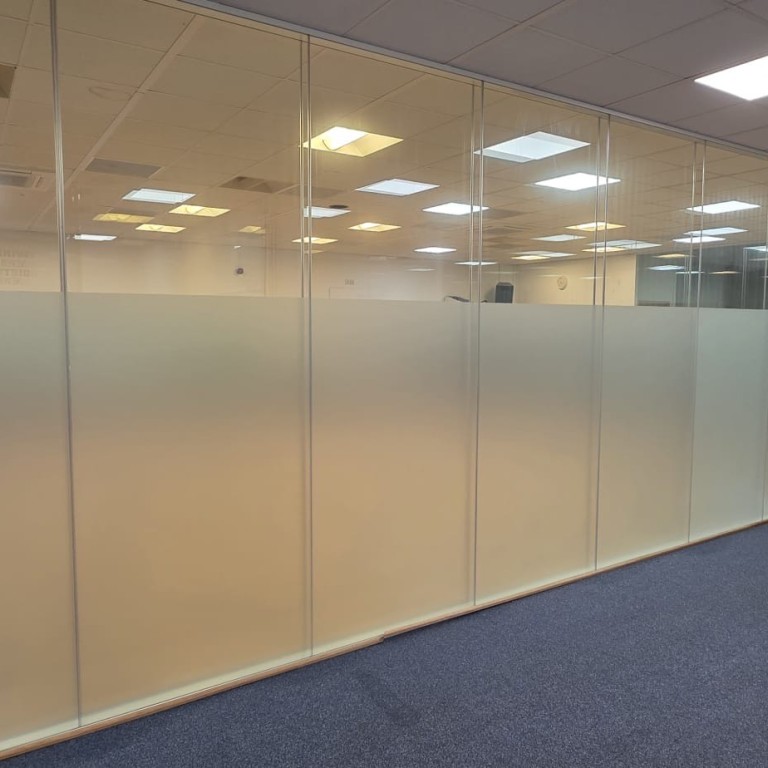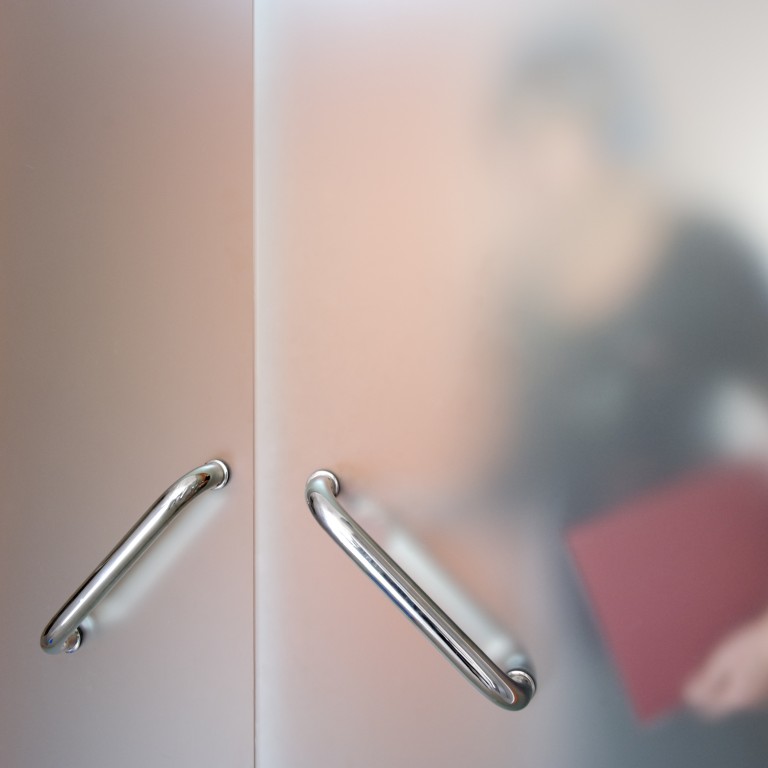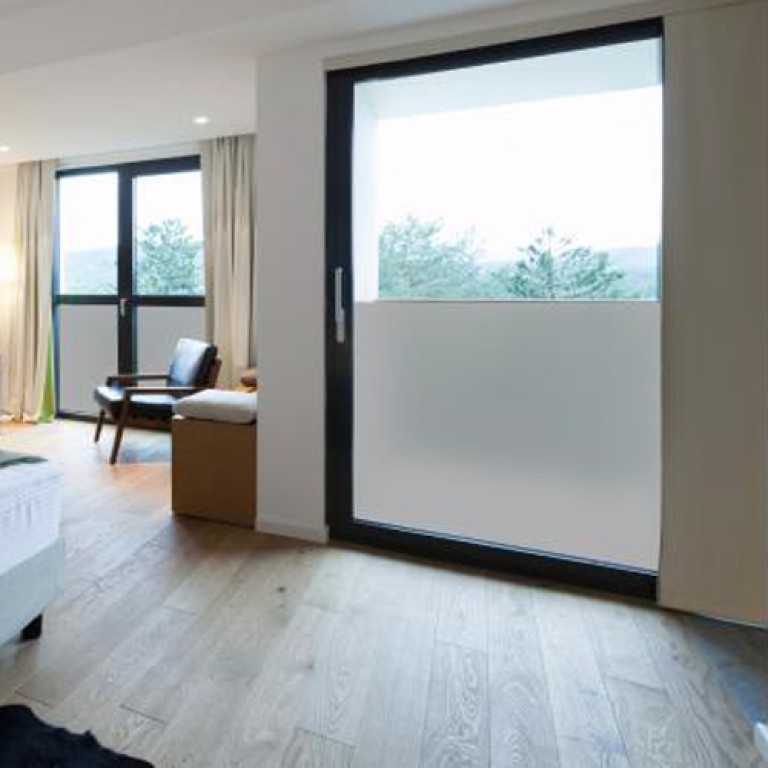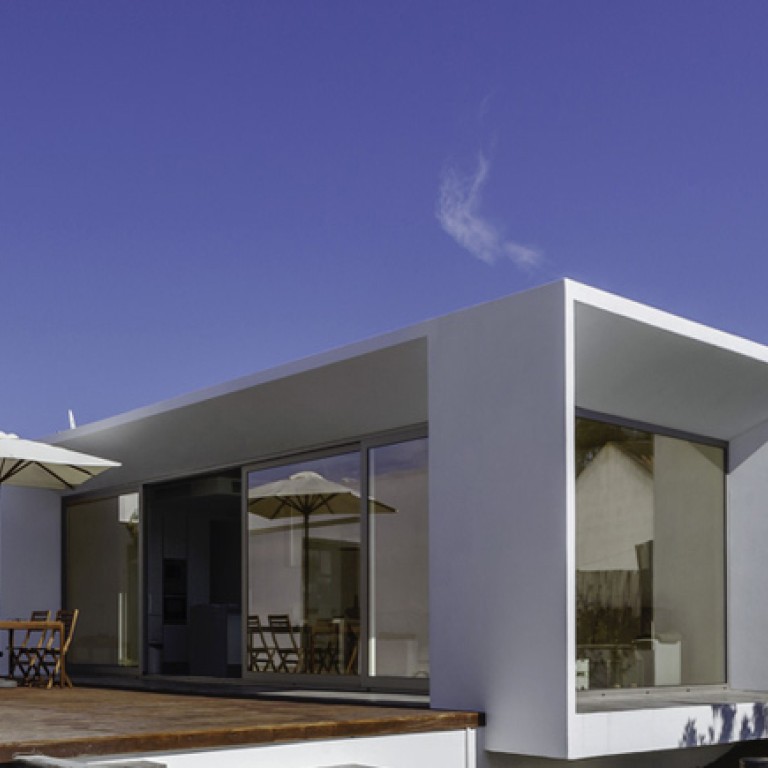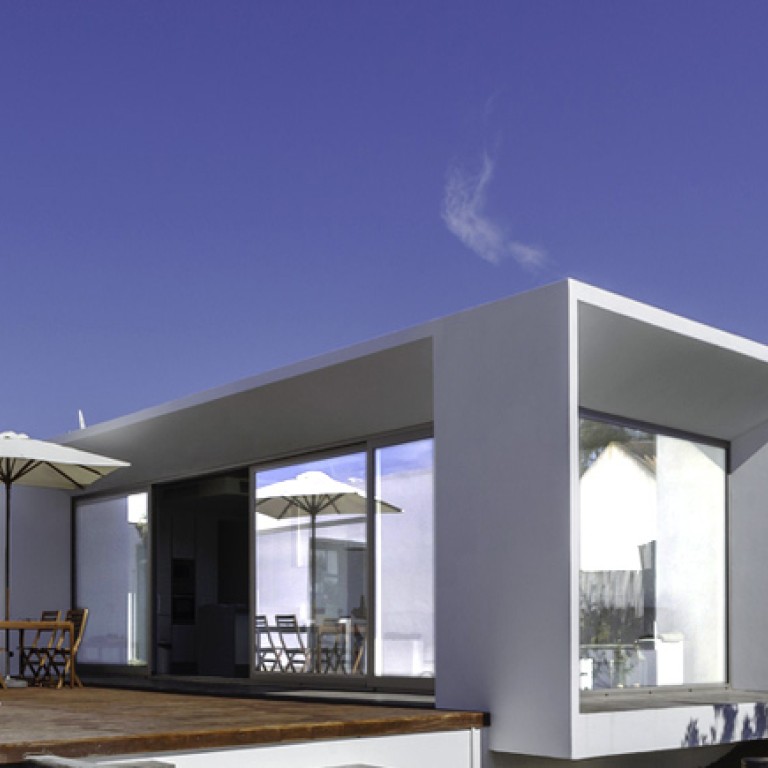Frosted
For unrivalled privacy whist still allowing natural light to enter your building take your pick of these films.
Frosted window tint film is a versatile solution for enhancing privacy and controlling natural light in various spaces. Frosted window tint film has emerged as a versatile solution for enhancing privacy and controlling natural light in various settings. For unrivalled privacy whilst still allowing natural light to enter your building, take your pick of these films.
Buy Frosted Window Film
Purchasing high-quality frosted window film is crucial to achieving optimal results. Inferior products may not provide the desired level of privacy and may be less effective in controlling light. Therefore, it is essential to invest in reliable suppliers, known for offering a wide selection of premium frosted films that meet the highest standards of quality and performance.
How Frosted Window Film Works
Frosted window film is available in both window film and vinyl variants, designed to replicate the appearance of etched glass. These films work on the principle of light diffusion, which allows natural light to enter while obscuring the view from both sides. The film scatters light as it passes through, creating an elegant frosted effect that enhances privacy without compromising on brightness.
Types of Frosted Glass Window Film
Frosted window film comes in various types, each offering unique characteristics to suit different preferences and design requirements.
The different types of frosted window film available include:
Standard Frosted Window Film: Standard frosted window film is a classic choice for achieving privacy and diffusing light. It creates an elegant frosted effect that obscures the view from both sides of the glass while allowing ample natural light to pass through. This type of film is often used in offices, conference rooms, and residential bathrooms to maintain privacy without compromising on brightness.
Colored Frosted Window Film: Coloured frosted window film comes in various hues such as white, grey, bronze, and silver. These coloured options offer versatility in design, allowing users to choose the best fit for their interior themes. For example, white frosted film adds a modern and clean touch, while bronze and silver variations introduce warmth and sophistication to the space.
Each type of frosted window film offers its own set of advantages and aesthetic appeal. The choice of film depends on individual preferences, intended applications, and the desired level of privacy and design aesthetics for the space.
Frosted window film comes in various colour options, including:
Each hue offers unique characteristics, making them suitable for different aesthetic preferences and design schemes. For instance, white frosted film lends a modern and minimalistic feel, while bronze and silver options add sophistication and warmth.
How to Choose the Right Frosted Window Film
Selecting the ideal frosted window film depends on several factors. Consider the level of transparency needed for the space, the desired texture, and any specific design requirements. Seek assistance from Tintfit's experts, who can help tailor recommendations to individual preferences, ensuring the perfect choice for each unique setting.
Advantages of Frosted Window Film
Frosted window film offers a plethora of benefits that make it a popular choice for both residential and commercial spaces. The film enhances privacy, making it ideal for bathrooms and offices. Moreover, it adds an elegant touch to the overall aesthetic appeal of any room. The film also aids in energy efficiency by reducing heat transfer and blocking harmful UV rays that can damage furniture and flooring.
Suitable Applications for Frosted Window Film
Frosted window film finds its ideal applications in bathrooms, offices, and commercial spaces. In bathrooms, it creates a private and relaxing atmosphere without sacrificing natural light. Offices can benefit from frosted window film for conference rooms, partitions, and doorways, creating a professional ambiance while ensuring privacy. Additionally, consider other creative applications for the film, such as decorative elements in home interiors.
Tips for Caring for Your Frosted Window Film
Proper maintenance is essential for prolonging the life and effectiveness of frosted window film. Regular cleaning is recommended using mild, non-abrasive cleaning agents. Avoid using sharp tools or harsh chemicals, as they can damage the film. By following these simple guidelines, the frosted window film will retain its beauty and functionality for years to come.
Frosted Tint Installation: Leave it to the Experts or DIY?
When it comes to installing frosted window film, you have the option of professional installation or a DIY approach. While DIY installations may seem cost-effective, they often result in imperfect applications, reducing the overall aesthetics and performance of the film. Hiring professionals guarantees flawless results, ensuring the film adheres properly and looks pristine.
Why Choose Tintfit for Frosted Window Film
Tintfit stands as the preferred choice for frosted window film due to its extensive range of premium products. Their commitment to product quality ensures that customers receive top-notch frosted films that deliver on performance and appearance. Tintfit's outstanding customer service and expertise in the industry make them a trusted supplier, catering to diverse needs and preferences.
-
Frosted window film is a valuable solution for various applications. Its effectiveness depends on your specific needs and preferences. Here are some key points to consider:
Advantages of Frosted Window Film:
Privacy: Frosted window film obscures the view from the outside while allowing natural light to enter. This is especially useful in areas like bathrooms, conference rooms, or street-level windows where privacy is essential.
Aesthetics: It can enhance the appearance of windows and glass surfaces, providing a clean, modern look.
Light Diffusion: Frosted film softens and diffuses natural light, reducing glare and creating a pleasant, evenly lit space.
Versatility: Frosted film comes in various designs and patterns, allowing customization to suit your decor and privacy needs.
UV Protection: It can block harmful UV rays, protecting your skin and furnishings from sun damage.
Considerations:
Opacity: While frosted film provides privacy, it's not a complete blackout solution. At night, with interior lights on, people may be able to see silhouettes.
Durability: The longevity and quality of frosted film can vary. Choosing a reputable brand and professional installation can ensure its durability.
Installation: Proper installation is crucial to achieving the desired effect and ensuring the film lasts.
Frosted window film is indeed a good option for enhancing privacy and aesthetics while allowing natural light. Its effectiveness largely depends on your specific use, the quality of the film, and professional installation.
-
Yes, frosted window film can be removed. It's designed to be a semi-permanent or temporary solution, depending on your needs. When it comes time to remove the frosted film, you can typically do so without damaging the glass or leaving any residue.
Here's how you can remove frosted window film:
Peel Off: Carefully peel off one corner or edge of the film. You can use a fingernail or a plastic scraper.
Slow and Steady: Pull the film away from the glass slowly and steadily. Make sure to keep the film flat against the glass to minimise the risk of tearing it.
Residue Removal: If there's any adhesive residue left on the glass, you can use soapy water or a mixture of water and vinegar to soften the adhesive. Gently scrub the area with a sponge or a plastic scraper until it's clean.
Final Clean: After the film and any adhesive residue are removed, clean the glass with your preferred glass cleaner for a clear, residue-free finish.
The ease of removal is one of the advantages of frosted window film. It makes it an ideal choice for renters or those who want a temporary privacy solution without permanent changes to the glass.
-
No, you generally cannot see through frosted window film at night. Frosted window film is designed to provide privacy by diffusing light and obscuring the view, both during the day and at night.
Frosted window film is often used in spaces where privacy is desired without sacrificing natural light, such as bathrooms, meeting rooms, or residential windows. Its 24/7 privacy features make it a popular choice for various applications.
-
Frosted window film can be installed on either the inside or the outside of the glass surface, depending on your specific needs and preferences.
Inside Installation: Installing frosted window film on the interior side of the glass is the most common method. It provides several advantages, such as protection from the elements and vandalism. This is typically the preferred choice for residential applications, offices, and other interior spaces.
Outside Installation: In some cases, particularly for commercial purposes, frosted window film can be applied to the exterior of the glass. This is often done when you want to create a specific design or pattern visible from the outside, or if the interior side of the glass is difficult to access.
The choice between inside and outside installation should be based on your specific objectives. Interior installation is usually easier and offers better protection, while exterior installation is less common and serves specialised purposes.
-
The longevity of frosted window film can vary depending on factors like the quality of the film, the conditions it's exposed to, and how well it's installed. Typically, most frosted window films come with a manufacturer's warranty that lasts between 5 to 10 years, which is a good indicator of their durability. However, it's essential to note that the actual lifespan can be influenced by the following:
Quality of the Film: High-quality frosted films often last longer and perform better over time.
Exposure to Sunlight: Prolonged exposure to direct sunlight can impact the film. High-quality films with UV-resistant properties tend to have a longer lifespan.
Climate and Environmental Factors: Extreme temperatures or frequent weather fluctuations can affect the film's adhesive properties and durability.
Installation: Proper installation is critical. If the film is correctly applied without air bubbles or gaps, it's likely to last longer.
Maintenance: Regular cleaning and avoiding abrasive materials during cleaning can extend the life of the film.
In summary, while the manufacturer's warranty often ranges from 5 to 10 years, the actual longevity of frosted film can be more or less depending on these factors. Taking good care of the film and ensuring it's installed correctly will help maximise its lifespan.
-
Applying frosted window film is a straightforward process.
Here's a step-by-step guide:
Gather Your Supplies: You'll need frosted window film, a utility knife or scissors, a squeegee, a spray bottle with soapy water (a few drops of dish soap in water), and a clean, lint-free cloth.
Measure and Cut: Measure your window's dimensions and cut the film about an inch larger than the glass to ensure full coverage.
Prepare the Glass: Clean the window thoroughly to remove any dirt or debris. Use a mixture of soapy water to clean the surface, then dry it with a cloth.
Spray the Glass: Mist the glass with your soapy water. This step prevents the film from sticking immediately, allowing you to adjust it during installation.
Peel the Backing: Carefully peel the backing from the film to expose the adhesive side. Do this gradually to prevent the film from sticking to itself.
Apply the Film: Position the film onto the wet glass. The soapy water allows you to slide the film into the correct placement.
Smooth Out Bubbles: Use the squeegee to press out any air bubbles or wrinkles. Start from the centre and move outward.
Trim the Edges: Use a utility knife or scissors to trim the excess film, following the outline of the glass.
Final Check: Go over the film one more time with the squeegee to ensure it's securely adhered, and blot any excess moisture with a cloth.
Drying: Leave the film to dry for a day or two. During this time, any remaining small bubbles or haziness should disappear.
Frosted film is a popular choice for adding privacy and style to windows. It's relatively easy to install as a DIY project, but if you're unsure or have larger windows, consider professional installation for the best results.
-
Yes, frosted window film can help reduce heat, although it's not its primary purpose. Frosted film scatters natural light, creating a diffused illumination that reduces glare and makes interiors more comfortable. In doing so, it can indirectly contribute to lower heat gain from direct sunlight. However, for significant heat reduction, you might want to consider other window films specifically designed for solar control. These films are engineered to block a higher percentage of solar heat, offering more effective temperature regulation.
-
Frosted window film offers several benefits:
Privacy: It obscures the view from the outside, providing privacy for homes and offices. This is particularly useful for spaces like bathrooms, conference rooms, or street-facing windows.
Aesthetics: Frosted film adds an elegant and modern touch to windows. It can be customised with various patterns and designs to enhance the overall decor.
Light Diffusion: Frosted film scatters natural light, reducing glare and creating a softer, more evenly diffused illumination. This makes interiors more comfortable and inviting.
UV Protection: Some frosted films have UV-blocking properties, which help protect your interiors from harmful ultraviolet rays. This prevents furniture and flooring from fading over time.
Easy Installation: Frosted film is typically self-adhesive and can be installed without professional help. It's also removable, making it an ideal choice for renters.
Energy Efficiency: Frosted films can help regulate the temperature of a room. By reducing direct sunlight and heat gain, they can contribute to energy savings.
Cost-Effective: Installing frosted film is an affordable alternative to frosted or etched glass, providing the same elegant look without the high cost.
Overall, frosted window film is a practical solution that combines style, privacy, and functionality, making it a popular choice for various applications.
-
Frosted window film is a versatile product used to modify the appearance and functionality of glass surfaces.
It serves several purposes:
Privacy: Frosted window film obscures the view from the outside while maintaining visibility from the inside. This enhances privacy, making it an ideal choice for areas like bathrooms or conference rooms.
Aesthetic Enhancement: It adds an element of elegance and style to windows, providing a frosted, translucent appearance. This can improve the visual appeal of a space.
Light Diffusion: Frosted film scatters incoming light, reducing glare and creating a softer, more evenly diffused light. This can be particularly useful in spaces with direct sunlight.
UV Protection: Some frosted films come with UV-blocking capabilities, protecting interiors from harmful UV rays, which can cause fading of furniture and flooring.
Customization: Frosted films are available in various patterns, allowing for customization to suit specific design preferences.
Easy Installation: These films are typically self-adhesive and straightforward to install. They are also removable, making them a practical choice for renters or those who want a non-permanent solution.
In essence, frosted window film combines aesthetics, privacy, and functional benefits, making it a popular choice for both residential and commercial applications.
-
Frosted windows, like any other architectural feature, come with their own set of advantages and disadvantages.
Pros:
Privacy: Frosted windows obscure the view from the outside while allowing ample natural light to enter, ensuring privacy without sacrificing brightness.
Aesthetic Appeal: They add a touch of elegance and sophistication to a space, enhancing its visual appeal.
Daylight: Frosted windows maintain a well-lit environment, reducing the need for artificial lighting during the day, thus potentially cutting energy costs.
Versatility: Frosted films come in various designs and can be customised to fit your stylistic preferences.
Cons:
Reduced View: While they provide privacy, frosted windows limit the view from the inside, which might not be ideal for spaces with scenic surroundings.
In summary, frosted windows are an excellent choice for privacy, aesthetics, and maintaining daylight. However, they may not be suitable for spaces where an unobstructed view is essential.

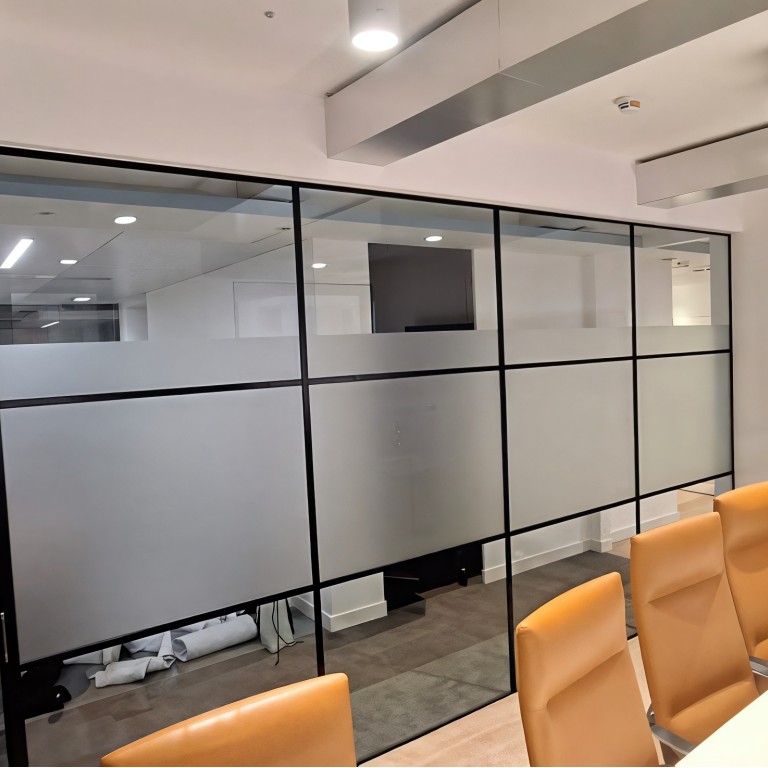
%20square-768x768.jpg)
